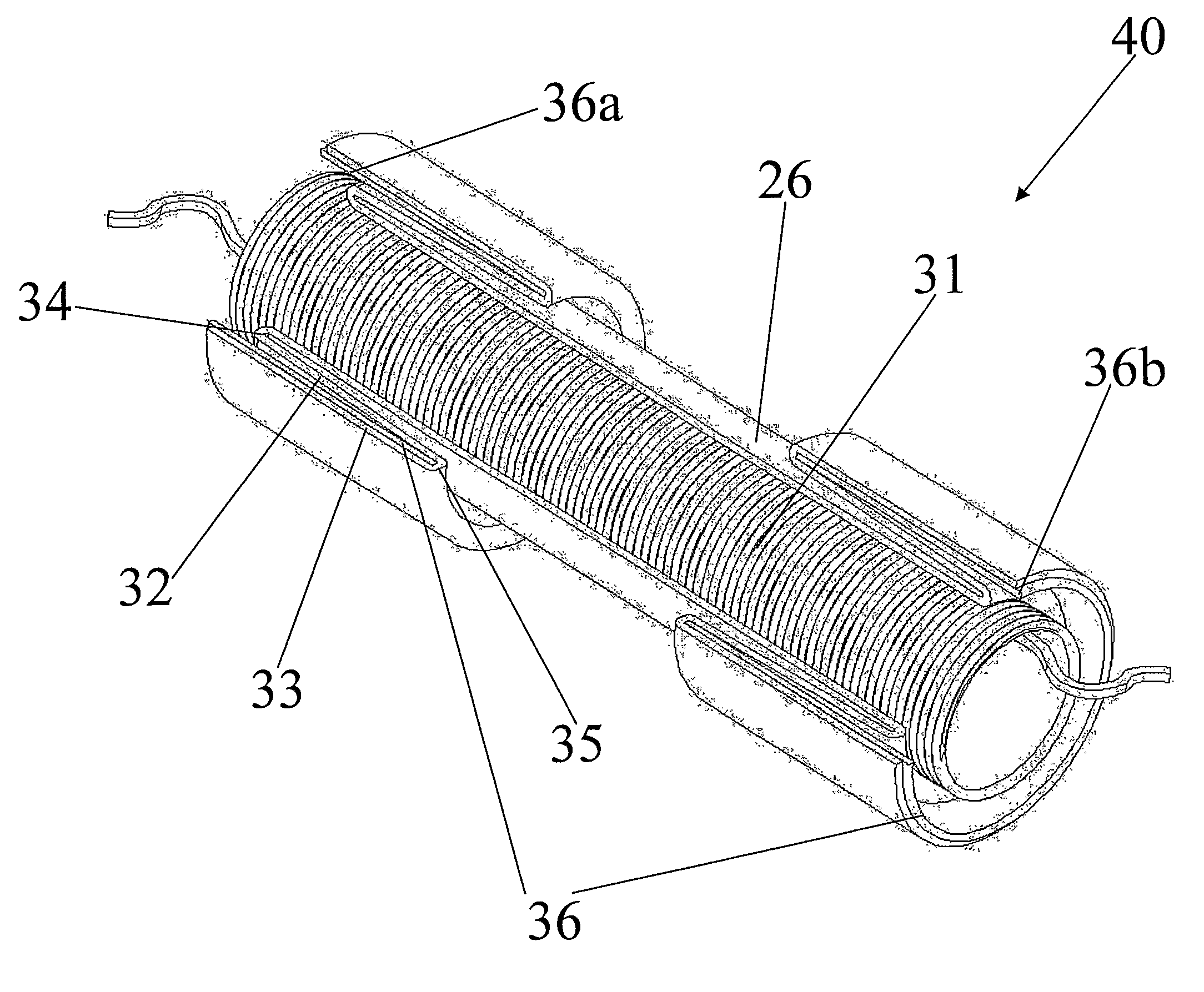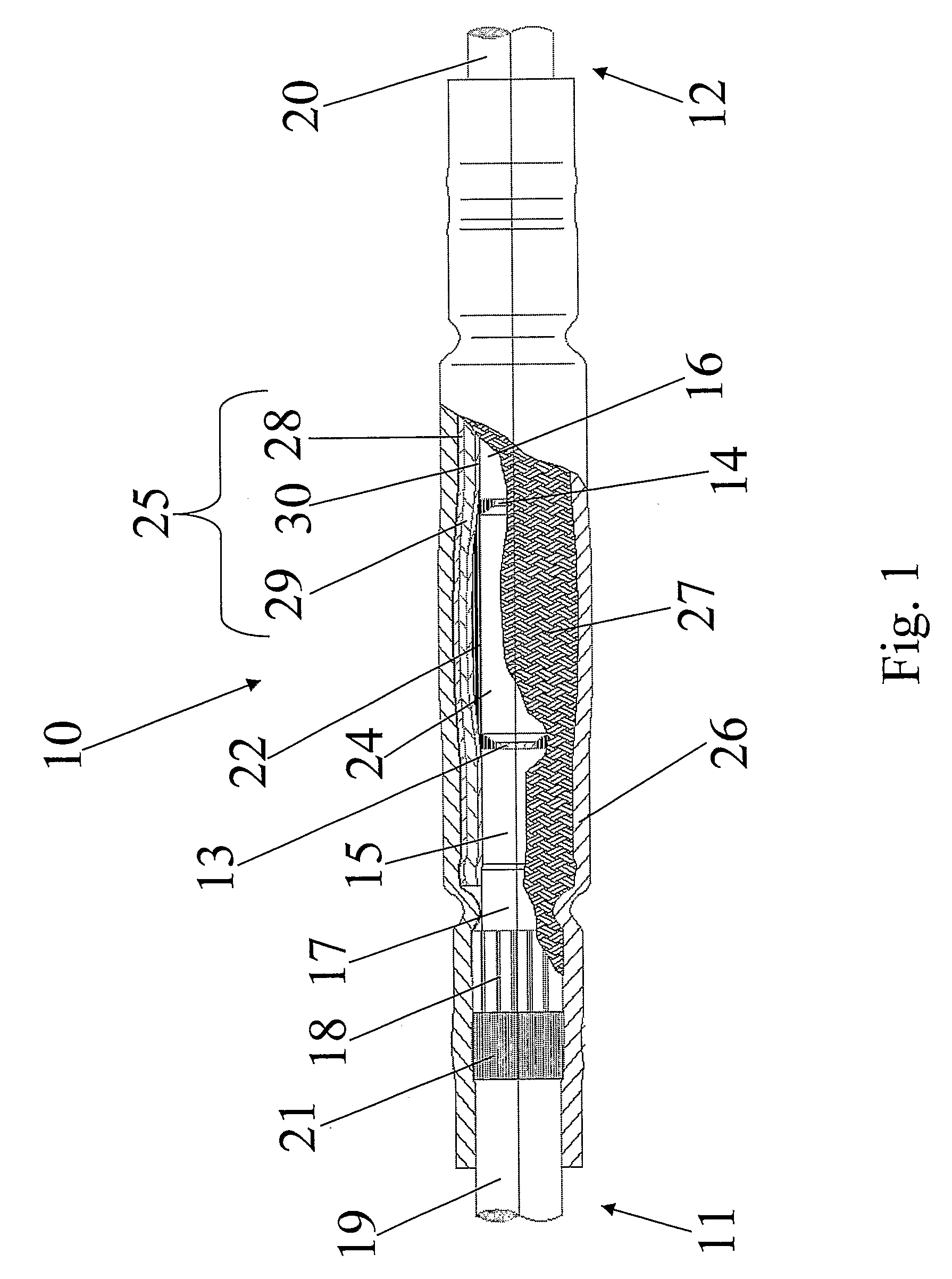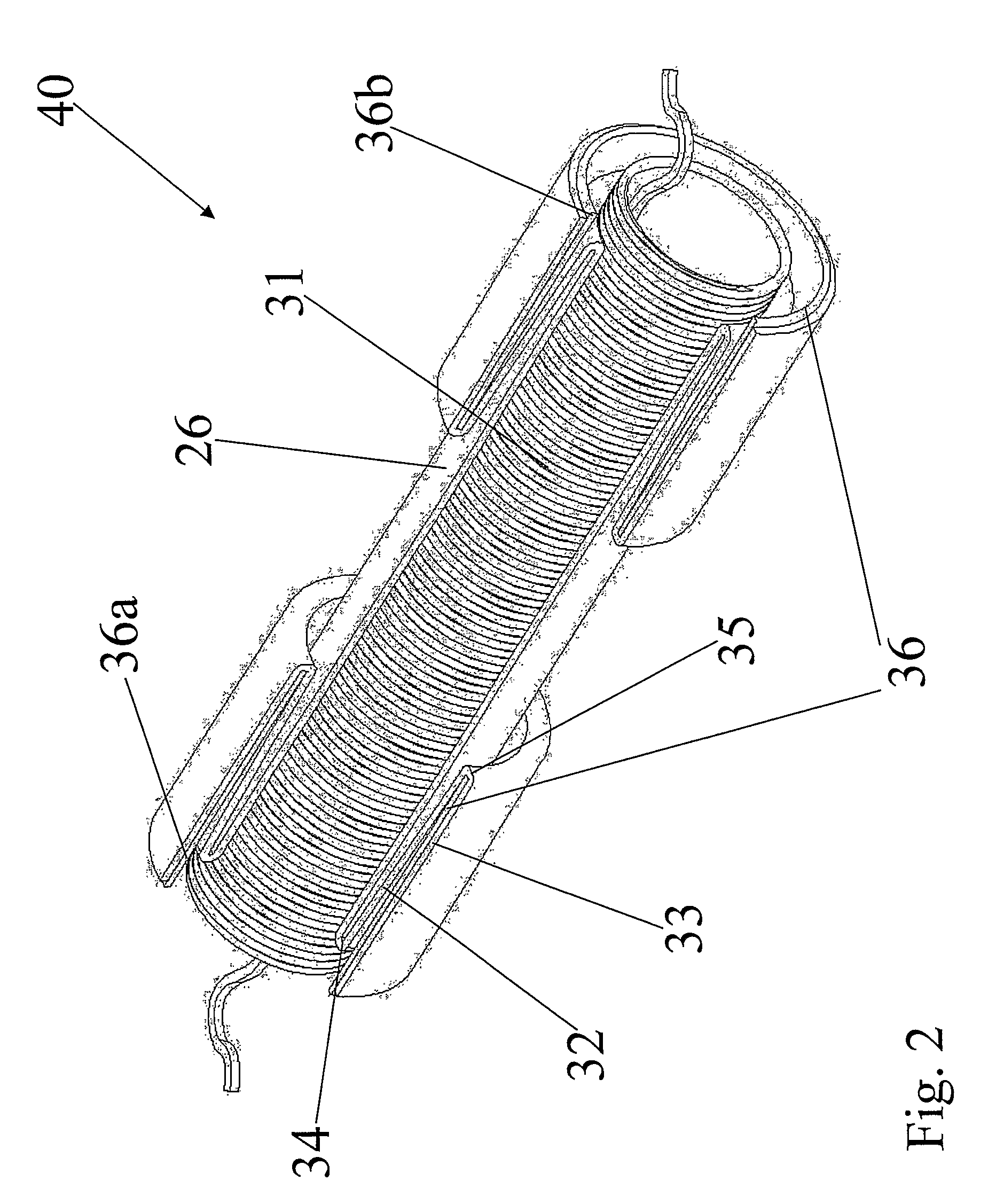Method for covering an elongate object and device for covering said elongate object
a technology of elongate objects and devices, applied in the direction of electrically conductive connections, pipe elements, conductors, etc., can solve the problems of increasing complexity, accelerating cable ageing, and negatively affecting the mechanical properties of the connection of elongate elements
- Summary
- Abstract
- Description
- Claims
- Application Information
AI Technical Summary
Benefits of technology
Problems solved by technology
Method used
Image
Examples
example 1
[0173]Two medium voltage electric cables were spliced by using the method of the present invention.
[0174]The cable features are reported in Table 1.
[0175]
TABLE 1Cable constitutive elementsCable featuresConductorcross-sectional area = 95 mm2Insulating Layerexternal diameter = 25.90 mmOuter semiconductive Layerexternal diameter = 27.90 mmMetallic screenexternal diameter = 31.00 mmExternal polymeric sheathexternal diameter = 37.00 mm
[0176]A tubular elastic sleeve 25—including a semiconductive layer 28, an insulating layer 29 and a high relative dielectric constant layer 30—was supported on a first tubular supporting element 31 of the removable type.
[0177]Said first tubular supporting element 31 was made of polypropylene and was formed of two identical half-supports axially abutting each other.
[0178]A metallic braid 27 was successively provided in the splicing zone to restore the metallic screens 18 of the two cables 11, 12.
[0179]A protective outer sheath 26 was then provided supported—...
PUM
 Login to View More
Login to View More Abstract
Description
Claims
Application Information
 Login to View More
Login to View More - R&D
- Intellectual Property
- Life Sciences
- Materials
- Tech Scout
- Unparalleled Data Quality
- Higher Quality Content
- 60% Fewer Hallucinations
Browse by: Latest US Patents, China's latest patents, Technical Efficacy Thesaurus, Application Domain, Technology Topic, Popular Technical Reports.
© 2025 PatSnap. All rights reserved.Legal|Privacy policy|Modern Slavery Act Transparency Statement|Sitemap|About US| Contact US: help@patsnap.com



